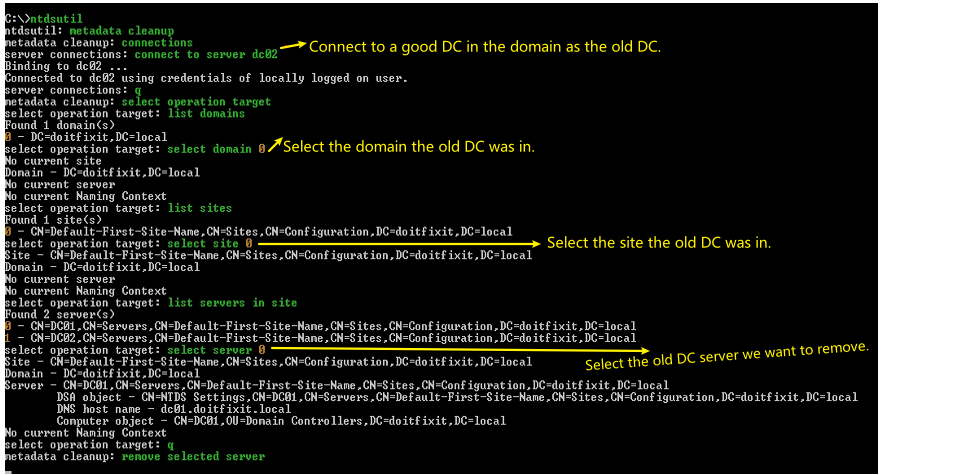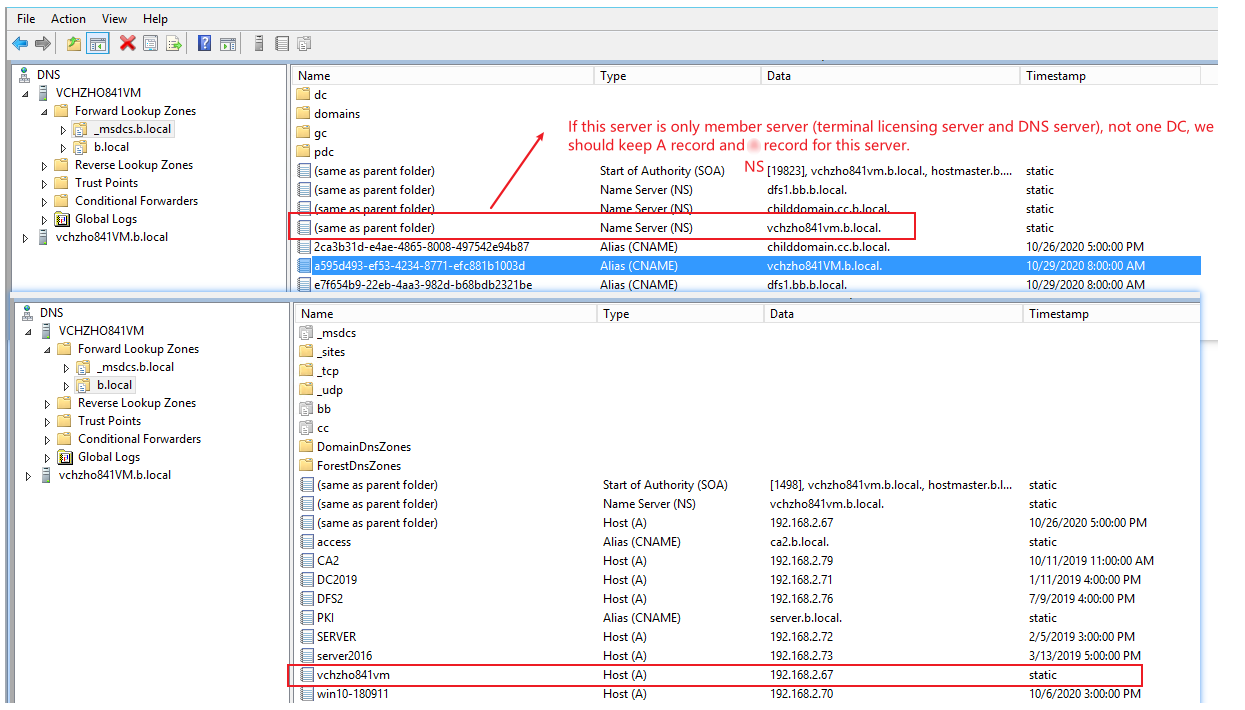Hello @RawatP ,
Thank you for posting here.
Based on the description above, I understand the recently demoted DC should be a DNS server, and we have demoted it, but it seems the metadata of this demoted DC is not removed completely (it seems the DNS record of this demoted DC is not removed completely).
We can try to clean up all the metadata for this demoted DC as below:
1.On one good and running DC in the same domain, run the following commands.

2.After the commands in the step1, to remove the failed server object from the sites in Active Directory Sites and Services, expand the appropriate site and delete the server object associated with the failed domain controller.
3.To remove the failed server object from the domain controllers container in Active Directory Users and Computers, expand the domain controllers container and delete the computer object associated with the failed domain controller.
4.If the removed DC was a DNS server, to remove the failed server object from DNS:
4-1 In the DNS snap-in, expand the zone that is related to the domain from where the server has been removed.Remove the CNAME record in the _msdcs.root domain of forest zone in DNS.
4-2 You should also delete the HOSTNAME and other DNS records.
4-3 If you have reverse lookup zones, also remove the server from these zones.
4-4 Update the DNS client configuration on all member workstations, member servers, and other DCs that might have used this DNS server for name resolution. If it is required, modify the DHCP scope to reflect the removal of the DNS server.
4-5 Update the Forwarder settings and the Delegation settings on any other DNS servers that might have pointed to the removed DC for name resolution.
After complete all the above, we can check if it still reture the demoted DC by running nltest /dnsgetdc:DomainFQDNHere or the following commands.
Dcdiag /V
repadmin /replsum
Repadmin /showrepl * /csv >showrepl.csv
For more information, we can refer to the link below.
Delete Failed DCs from Active Directory
https://petri.com/delete_failed_dcs_from_ad
Hope the information above is helpful. If anything is unclear, please feel free to let us know.
Best Regards,
Daisy Zhou



